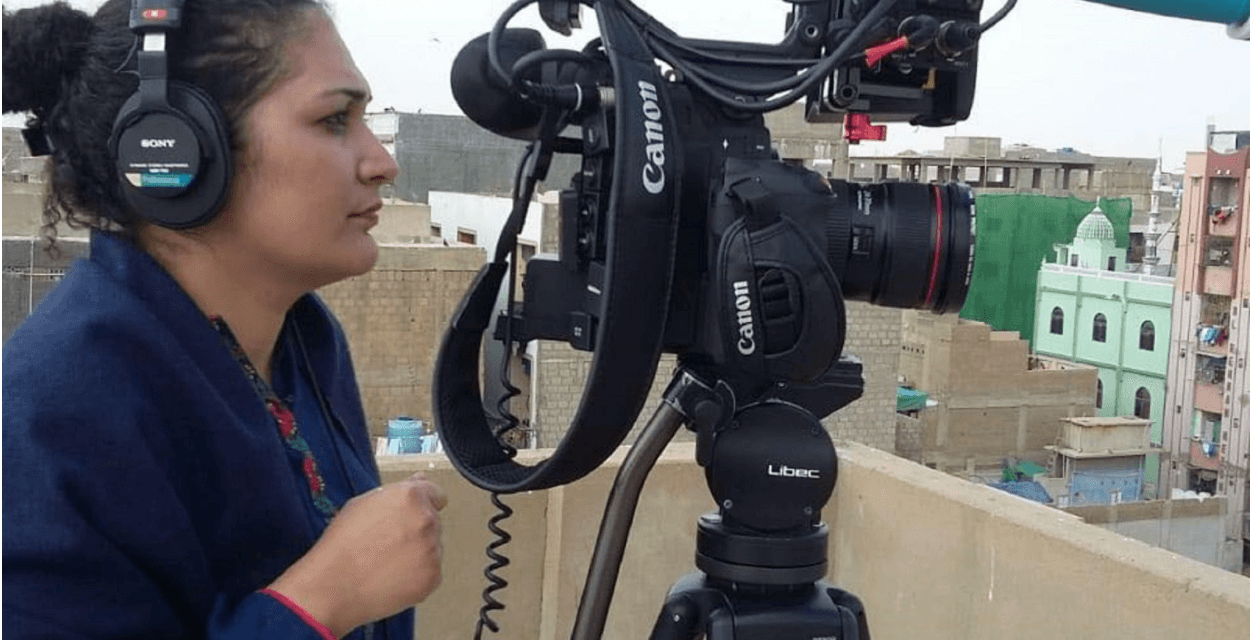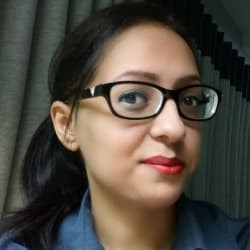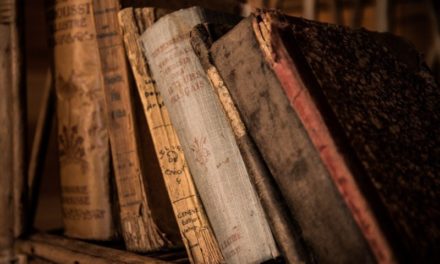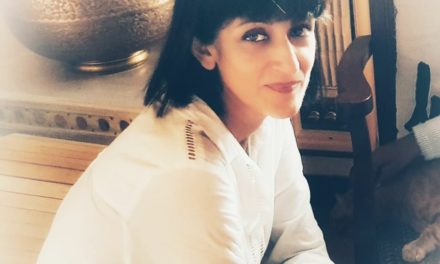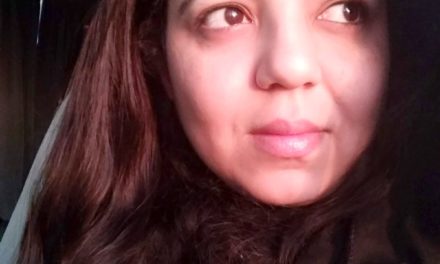I find journalism to be a sister-field of writing, different yet both can learn so much from the other. The field of journalism is meticulous, varied and informative. In the many discussions that I have had with Shumaila Khan over the years, I have always found her analysis or viewpoint to be thorough and well-researched. Shumaila is an experienced multimedia journalist with a demonstrated history of working in the news media industry for over a decade. She has consistently delivered high-impact material that was not only well-received within the BBC Urdu service but was also published and aired on BBC World TV and Online. As a freelance journalist and resource person, she has worked with some of the most esteemed organizations such as UNHCR, BBC Urdu, BBC Hindi Languages, DW English and Internews.
There is a drive and a curiosity that she has for every new story that she covers, a zeal for every pitch that she makes, along with a continuous interest in all of her subjects. If writing is to be a life-long commitment, it would surely need the business of a busy journalist like her. In the following interview, I speak to Shumaila about the many facets of her life and experiences as a journalist and, as usual, take inspiration from her adventures. I share this talk here in the faith that it will entice poets and writers to go looking for ideas/stories with the passion of a journalist and become curious about this type of writing.
Both the journalist and the writer write. What in your opinion is the difference between the journalist and the writer?
I think the journalist can’t explore as much as a writer can because the journalist has to sit on one topic at a time and report it, and the writer can explore different dimensions of a subject. The writer can include not just research, but also observations and what not, so the difference is that the writer has a broader horizon than a journalist. But I think the journalist’s work complements the writer’s work because if a journalist won’t report, you won’t have the basic, the most prime information that you need as a writer.
How does one acquire a story? Where does the first inclination of the idea come from?
It usually comes from the trends such as when COVID hit or when a pandemic hits the world, all the stories are about it. If you see in the past, when the war broke out in Afghanistan all the stories somehow had a link to Afghanistan. Also, it’s not like all the stories are related to one subject, there are personal interests in the stories of a journalist. I mean, I like to work more on socialist issues than on political ones. I see that that gives me a lot of insights towards an issue, while the political beat never interested me because I felt there to be one type of language there, and there is clichéd language used in reporting political issues, be it report reporting, be it political reporting. But if you are doing something like cultural or music themes or reporting on social issues, you can touch a wide range of issues and you can cover them and meet the people on the ground. I think I like that – I’m not just undermining the political and report reporting! These are obviously one of the most important beats, like other beats such as sport and tech these days.
What strikes you personally about a particular story? Why that particular one and not any other?
It has to have some kind of uniqueness in it. It should interest me and then I’ll be able to report it. Otherwise, if someone like my editor suggests a story to me, in which I don’t have any interest, I find myself in a very difficult position. This is because I can’t imagine the images that I should bring for that story. I find myself in a very strange position there, I can’t even think of the words that can properly justify my story. So I need the unique elements in my story, otherwise I won’t be able to report it.
I remember, I did a story on fire-jugglers a long time ago…these people perform their stunts in front of a lot of people. I instantly feel connected to the people who are compelled to do their job, despite the dangers that lie in their work. For example, I remember I did a story on home-based workers and I met people who were making shoes in their house and there was a lethal gas element involved. They were compelled to work in fumes! This could light up their houses, it could burn them if they were working in a close environment. Same goes for the people who are working in the fisheries, and people who go deep-sea fishing. Any story that has danger involved, the dare element involved strikes me the most.
Also, I’m always interested in two types of stories: labor stories –men or women – and also women stories. I feel personally attached to these stories, I feel I have my heart in these stories.
What does a story need to sell?
Since I’m working in a medium of visuals, I think a strong image can sell your story. In my work, I travel a lot and speak with a lot of people and I’m in and out of cities for just one image and sometimes we don’t even use that image.
I remember I covered Holi, as Muslims we have always seen that only in Indian movies starring Amitabh Bachan saying “Holi ayei hei” or “Holi kei rang”, but I saw it in real-life in Tharparkar, in Mitthi, and that one image alone sold my story. There was nothing in that story, in terms of information, except that Hindu and Muslims celebrate Holi festival together and it’s a known thing in Pakistan but that single image sold that story.
I did a story on a Tamil wedding in Karachi, which was very sweet. While I was filming it, it was a very congested area, people were irritated that we were filming their celebrations and they were there to enjoy that event… they were not liking it but we got really good images out of that. So, in visual terms, a good image can sell the story.
But I have been doing radio for a very, very long time, and I think my prime work is in radio. I think audio is also very important when it comes to personal stories. I have been transcribing a lot of work coming from the BBC World like I did the transcription of Hiroshima and Nagasaki files and while translating those stories of victims, I kept weeping. The audio has that kind of impact and it leaves an image in your mind, even if you haven’t seen it. Words are also important when you are making an audio report.
There’s a certain objectivity to a journalistic piece that gives it authority. Is there any price the journalist pays for it?
We know the press freedom is curbed in many ways in Pakistan. Journalists self-censor a lot and I sometimes find myself self-censoring a lot of things. I think I’ve been trained or maybe I’ve been sensitized for that. While at the BBC, we’ve been told not to express our own opinion very strongly on social media because people will take you as a biased journalist if you do that. Since I’ve spent a long, long time with the BBC, I feel I’ve been sensitized about making a public opinion and contributing to it. Sometimes of course, you feel strongly about a topic, but you can’t express that.
You should have a neutral tone, use both sides, double-check your facts, never accuse anyone and if you accuse anyone then you have to take their point of view. But sometimes you really feel like a human, and not just a journalist and not being able to express your opinion takes a toll on you… because after all, you have your opinion, you have your subjectivity.
What role do images/photographs play in journalism? Can you tell us a bit about photojournalism?
As a moving image has its own impact, I think a photograph also has its own importance. We have seen that one image can spark a huge debate. I’m sure you remember that image of a toddler on a Turkish beach and that image alone was more impactful than all the stories we had been reading and seeing for a long time that were coming from the war hit zones and from Africa where the militants had taken over like in Nigeria. A lot of migrants were coming from there and other parts of Africa and also from the Middle East and Syria, Iraq and they were all taking the route through the Mediterranean. In Europe everybody was thinking of closing their doors, but that image alone was so impactful that the European Union and other countries started considering whether they should allow these immigrants… illegal immigrants into their countries.
Then we remember the girl with the grapevine eyes, Sharbat Gula, that one image alone was so impactful that everyone started talking about the condition of women in Afghanistan. When the picture of Zainab was released, that particular girl had something strong in her eyes or appearance. Or maybe she was so innocent or beautiful that the story got everyone’s attention. But there are other child victims that we don’t pay as much attention to, as much as was given to Zainab. So yes, one image can do a lot in journalism.
On a different note, the image alone is important but the debate around the images started a lot earlier. If there is a bomb blast, is it ethical to take the pictures of the victims, or should the journalist help them? Same goes with the images of dead bodies, we see journalists taking pictures of them and sharing them on social media. So a lot has changed in the past years, there are many newspapers which don’t publish the pictures of dead bodies or of people who were killed in a cross-firing. Journalists are not allowed to share these pictures, but people still do that.
What can you tell us about field work and how you incorporate it into your writing?
There are times in your journalism when you can’t film anything, or record anything even audio wise. So, all you have is your observation. I remember one time…it was back in 2014 or 2015, when operation Zarb-e-Azb started and I went to Bannu and I think I was the first woman who met the tribal women coming from North Waziristan to Bannu. They were all in veils, and they were not ready to stay in the camps and the camps were empty…they had villages in Bannu so they were renting houses and staying there, but not living in camps. I remember there was a woman from the NGO who suggested I take a burkha, otherwise the women wouldn’t talk to me but what I experienced was that despite taking the burkha women were not talking to me. This was because I had a ‘weapon’ in my hand according to them which was the mic and recording device. I went out and gave it to my driver and went back there alone.
When I went there again they were not shaking hands with me. It was because I was the one traveling and I was not one of them and I was an outsider. I was wearing the full veil, but they were not talking to me. It took me a lot of time to gain their confidence, and then they gradually started talking to me. I had thought that these women would not know anything about their social surroundings, politics and the world. I was so amused to hear that they were very well-aware of what was happening around them. So I wrote a few pieces about them and they were all mostly my observations and the ‘talks’ I had with them. Since nobody meets them, they live in the mountains and many of us are disconnected with that kind of life… I wanted to know how they live, what do they think, how do they bring up their children? What do they do every day? After listening to them, I was able to put it in writing.
Have you ever considered writing a memoir or a biography? How about an autobiography?
I haven’t thought about it. When I listen to the stories of my seniors I do suggest to them to start recording their audios, or start their podcasts, or start writing something. I think I myself am not yet there. It still has some time…when I have nothing else to do, I’ll think about it!
You visited Thar recently for a story… if you had to describe the visuals of Thar in 5 words what would they be?
Desert. Peace. Border. No entertainment. Beautiful Jewelry.
What is your personal favorite story that you have covered?
I think you always remember your first baby. I was lucky enough to cover one story about women empowerment. It was about a woman mechanic from Rahim Yar Khan. I didn’t know how impactful that could be but I was told by my colleagues that the woman had a red dupatta and she was working as a mechanic on a bike. And that image sold widely on BBC World and that was my first story. BBC English also ran it, and many other services like Arabic, Persian besides Urdu, Hindi and regional languages also ran it. It was the first story that gave me a certain platform. It is one of my favorite stories.
What is the story that you’d love to cover but have not had the chance as yet?
There are many…one of them is about abortion that I feel very strongly about. I really don’t find women who talk about this issue openly. I really want to have a discussion around this topic. I also thought of making a documentary about it but I was not able to secure any case-study where a woman would come out and speak openly about it.
